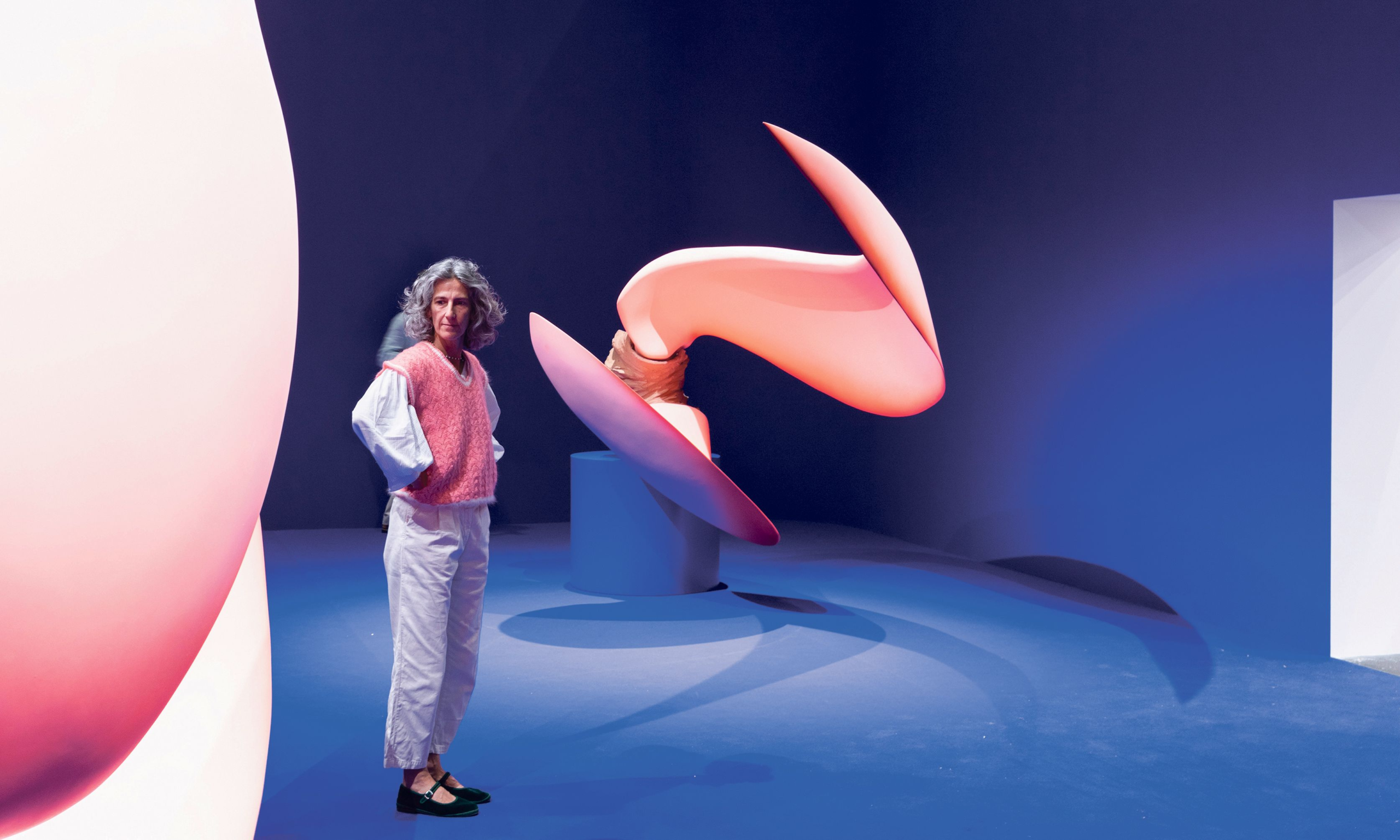Teresa Solar Abboud, Tunnel Boring Machine (Transformation Figure) (2024), Travesía Cuatro David Owens
In curating this year’s Unlimited section at Art Basel, Giovanni Carmine chose a mix of works representing both important moments in art history and the cutting-edge young artists of today. Carmine, the director of the Kunst Halle Sankt Gallen (about two hours east of Basel), also paid special attention to the setup of the space—several of the works on view are hosting performances throughout the run of the fair. “We need to spend more time thinking about things and looking carefully,” he says, stressing the importance of being present in the individual installations and not getting overwhelmed by the size of the event. He told us about some of his favourite works, “getting back to the humanity of art and the human being as the centre of art”.
Teresa Solar Abboud, Tunnel Boring Machine (Transformation Figure) (2024), Travesía Cuatro (pictured at top of page)
“These sculptures live between the natural and the unnatural, somehow both menacing and welcoming at the same time. The title refers to an industrial object, but they look like floral or biological forms suspended in space. The objects are so unique, and they are totally handmade in her studio.”
Mario Ceroli, Progetto per la Pace (1968), Cardi Gallery David Owens
Mario Ceroli, Progetto per la Pace (1968), Cardi Gallery
“Putting a project about peace at the entrance sends a message—a basic message, but it works. Many artists were here to install their works this year. Ceroli was here, and he’s 86 years old. He’d never been to Basel before and was very proud to be in the company of such great art.”
Hiroshi Sugimoto, Mt. Fuji (2022), Fraenkel and Lisson Gallery David Owens
Hiroshi Sugimoto, Mt. Fuji (2022), Fraenkel and Lisson Gallery
“This is a real homage to Japanese culture, not only because the subject is Mount Fuji, but because you see it in a magical and metaphysical context. Every detail of the work reflects Japanese culture at its best. The lighting, everything about the work is perfect.”
Anna Uddenberg, Premium Economy (2023-24), Kraupa-Tuskany Zeidler and Meredith Rosen David Owens
Anna Uddenberg, Premium Economy (2023-24), Kraupa-Tuskany Zeidler and Meredith Rosen
“Here, you have this really cold technoid aesthetic, and two dancers perform on the sculptures—climbing on the objects. Strangely, these sculptures are something between sexual and very bureaucratic, like the future chairs of an office. But they also have this amazing interaction with the human body during the dancers’ performances.”
Michel Journiac, Œdipus Rex (1984), Christophe Gaillard and Galerie 1900-2000 David Owens
Michel Journiac, Œdipus Rex (1984), Christophe Gaillard and Galerie 1900-2000
“Journiac was a pioneer of performance art in France and a very radical artist in his approach to the body. These are real human bones, actually. I think he got them from an anatomical shop, which you could do at the time. This is a very strong piece by an artist who was forgotten but is now recognised for his importance.”
Seba Calfuqueo, Ko ta mapungey ka (water is also territory, 2020), Labor David Owens
Seba Calfuqueo, Ko ta mapungey ka (water is also territory, 2020), Labor
“Calfuqueo is of Mapuche origin, and her work is about Indigenous rights and culture. This piece has to do with the Chilean government selling water rights to private companies, which means the Mapuche people no longer have access to clean water. She performs a ceremony here every day during the fair to highlight the importance of water rights for everybody.”
This Robert Frank photograph was not in his book The Americans (1954-57), Pace and Thomas Zander David Owens
Robert Frank, The Americans (1954-57), Pace and Thomas Zander
“This series is maybe the most important photography work of the 20th century. Looking at the images is very emotional, like watching an incredible film about how things have changed but also how they are still the same. The prints displayed here were the artist’s personal copies, and the last image [pictured above] is not in Frank’s book—it was one he made just for himself.”

